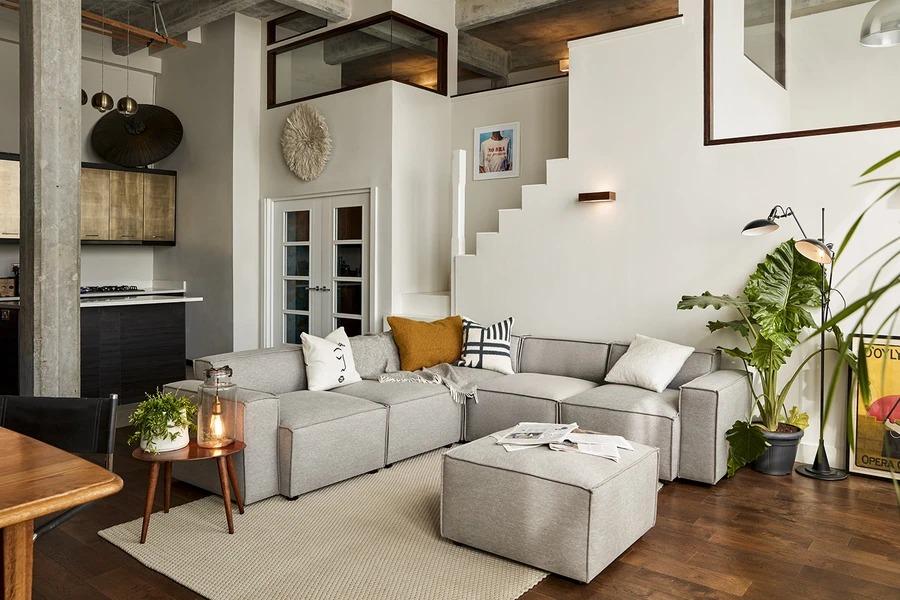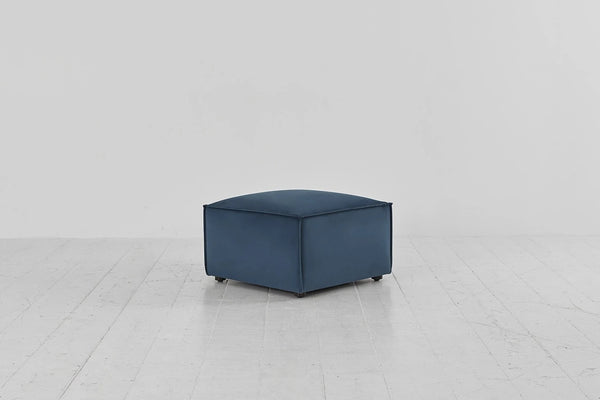What is an Ottoman? A complete history and style guide

What is an Ottoman? A complete history and style guide
You might have heard the name Ottoman mentioned in a few contexts. First, in relation to an ancient Empire that spanned much of Europe and the Middle East. Secondly, when people are discussing furniture. So, exactly how are these two things related and, more importantly from a design point of view, what is an Ottoman and what does it do?
This guide to all things Ottoman aims to answer these questions and focus on how and why we can use them in the home.
What is an Ottoman?
At its essence, an Ottoman is a versatile and flexible piece of furniture with multiple uses across your home. It’s a freestanding piece that comes in a variety of shapes, generally padded and upholstered and often with a hollow centre for storage.

It can be used as a seating option, for storage, as a table centrepiece and as a footrest. This versatility comes from the simplicity of its design.
The history of the Ottoman
So, what’s it all got to do with an ancient empire? Well, the Ottoman Empire controlled much of Eastern Europe, Western Asia and Northern Africa between the 14th and 20th centuries. Originating in Turkey but overseeing a vast area of varying cultures, languages and peoples, it helped ideas to spread around the world.
The empire made incredible advancements in medicine, inventing devices still used in hospitals today – including scalpels and forceps. They created the astronomical clock, made huge strides in physics and geography. But they also knew how to relax.
Their version of the Ottoman was like a low sofa with no arms, piled high with cushions and set against the walls of a room. Over time they evolved to be freestanding, providing extra seating and storage, growing smaller in size but growing in usefulness.
What is the purpose of an Ottoman?
The paradox of the Ottoman is that it is not really designed for any one specific purpose, yet it can be one of the most useful pieces of furniture in any room. It’s this enigmatic form that makes it so popular.

In this way it differs from a footstool, which is designed specifically to rest feet on and originated in ancient Egypt. Ottomans are often designed using the same fabric as the sofa or chair they accompany. But they can also have an impact by standing out from the other furniture in the room.
How do you use an Ottoman?
The paradox of the Ottoman is that it is not really designed for any one specific purpose, yet it can be one of the most useful pieces of furniture in any room. It’s this enigmatic form that makes it so popular.
Ottomans can be used as storage, a place to either hide away items that are not often used or showcase some of your belongings. Lots of people use their Ottomans as a soft furnished alternative to a coffee table, even serving drinks and putting vases on them!
What is the difference between an Ottoman and a footstool?
An Ottoman differs from a footstool, which is designed specifically to rest feet on and originated in ancient Egypt. Ottomans are often designed using the same fabric as the sofa or chair they accompany. But they can also have an impact by standing out from the other furniture in the room. The easiest way to tell an Ottoman from a footstool is: can I put my feet on it and does it match the furniture? If the answers to these are no, you have yourself an Ottoman.
So, what’s a pouf then?
A pouf is essentially a large cushion, with no solid base and smaller than an Ottoman. As well as differing in pattern and size, poufs are not designed to be used as storage or as a table. Where Ottomans can have legs, storage are firmer than poufs.
Can you sit on an Ottoman?
While not its primary purpose, a fabric Ottoman makes excellent extra seating when you have guests or just for a quick perch. The lack of arms and back means it’s not really a long-term seating option when slouching and watching TV or reading. Although, this does depend on size. Choose a really large Ottoman and it can form a central seating space suitable for one or more people, especially when teamed with the right kind of supporting pillows.
What is an Ottoman box?
The other main advantage of the Ottoman is that it can have a hollow centre and hinged or removable lid. This provides a perfect hidden storage compartment for extra pillows, blankets, magazines or whatever else you want to put in there.
Common Ottoman designs
There are no rules about the form of an Ottoman. They tend to be overstuffed for that extra padded feel. But they can be round, square, rectangular or other geometric designs. Some have legs, others are formed from a large padded base, like this Pumice Linen Ottoman from Swyft. Some have castors for extra mobility. This flexibility in design means they can happily fulfil several roles in your home.

Despite being a relic of an ancient eastern empire, the Ottoman also straddles the range of design styles. It can look just as at home in a North African-themed living space complete with Moroccan patterned fabrics as it can in a modern, contemporary living room. It’s all to do with its winning combination of design simplicity and functionality.
How to style an Ottoman
It’s coming up to a new year, if you’re feeling in the ‘new year, new me’ way already, we have a prediction of the 2022 interior trends just for you. An Ottoman can be a central part of your living room, bedroom or dressing room aesthetic, so it’s important to know how best to style it, set the right mood for the room and showcase your personality through your design choices.
1. Use a large, rectangular tray or small circle tray
Echoing the shape of your Ottoman with a flat tray to store your favourite trinkets on is the most simple and space-effective way of styling your Ottoman. To mix it up and draw the eye, trays can be unusually shaped or statement pieces with marbling and colourful patterns on them.
2. Add some smaller, dynamic trays
Use trays as a decorative (and ergonomic) statement! Different sized trays can help your space look more organised and categorise things you’d like to keep on your Ottoman. From small trinket trays to throw your jewellery into after a long day to flat trays highlighting a beautiful vase of flowers, lots of trays means lots of layers to your interiors.
3. Pile up your books
An Ottoman can be a great substitute for a coffee table. Ideal for homes with small children (less sharp corners), Ottomans can hold some of your favourite books to create a dynamic piece of furniture that expresses your interests and individualism.
4. Mix up your colours, shapes and sizes
Picking the perfect colour for your Ottoman to fit your size and space (plus coordinating with your sofa) can be a fun way of spicing up your interiors. If you’re looking to stay current and update for 2022, check out Pantone and Dulux’s colours of the year for some quick inspiration.
5. Use organic materials
Natural touches brings the outside in. Over the past two years a combination of the ‘green revolution’ and restricted access to the outside world has increased the popularity of flowers, plants and organic materials immensely. To keep your space airy and bright, think of including a tall, slim potted plant on your Ottoman, or a vase full of fresh flowers to bring a pop of colour into your home.
6. Just add candles
Ambient light is the ultimate mood-setter. A scented candle not only provides a soft light to romanticise your room, but also gives a pleasant smell to any living room. Tealights and holders are more bohemian, with decorative elements you can style to your liking.
Ottoman fabric choices
The choice of fabrics is as varied as the range of designs. This teal velvet ottoman from Swyft adds a dash of luxury to your living room or choose the shadow linen ottoman in combination with a corner sofa for a practical yet stylish family living area.

The big decision you have to make in terms of Ottoman fabrics is whether you choose them to match in feel and tone to your other seating or opt for a contrast. The beauty of the Ottoman is that whatever you want it to look like or do in your home, there’s an option for you. Check out our dedicated page to see our fabric ottoman designs.
Share
Tags
- culture
- product
- style
- TEMPLATE_GUIDE





